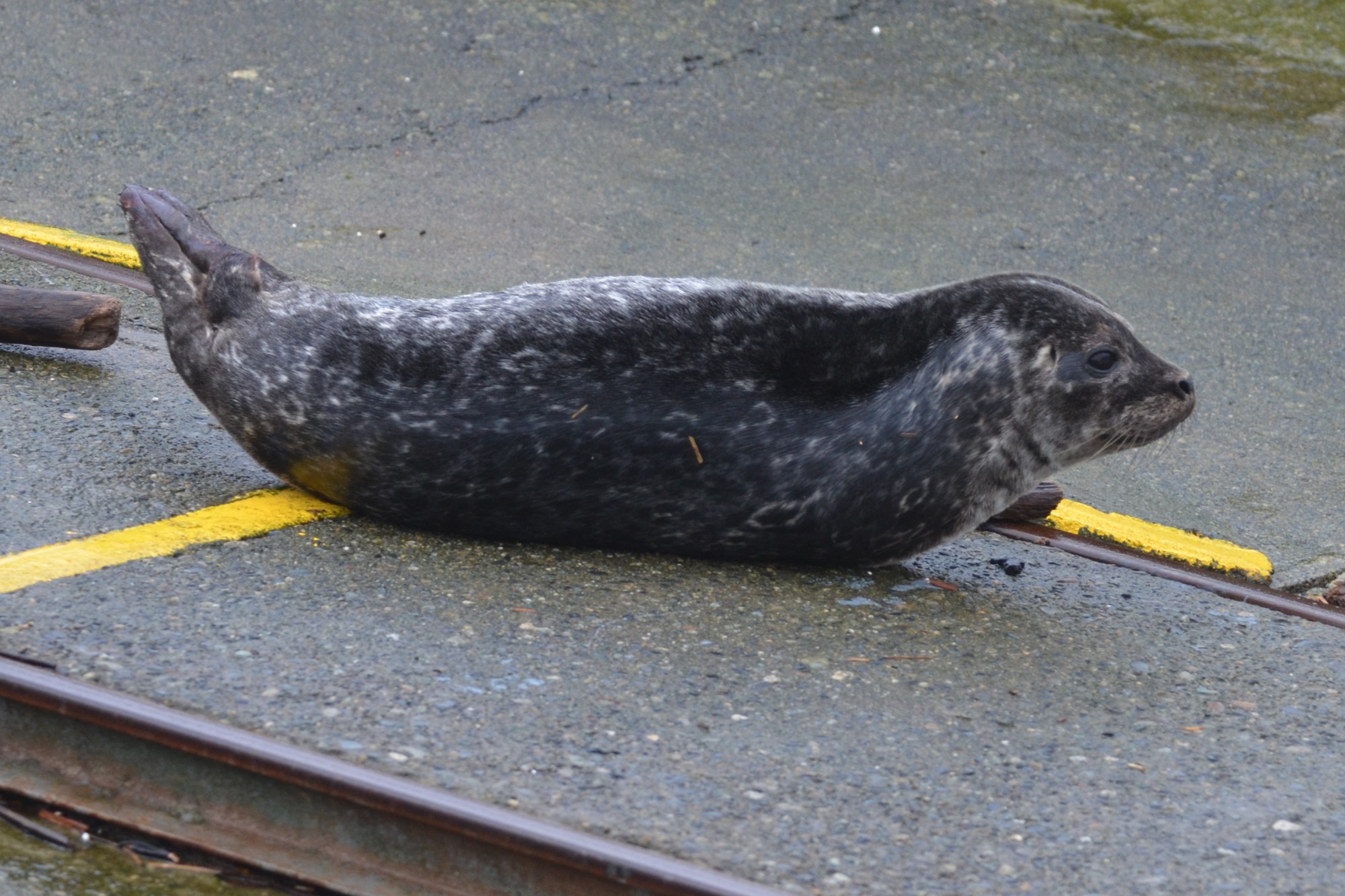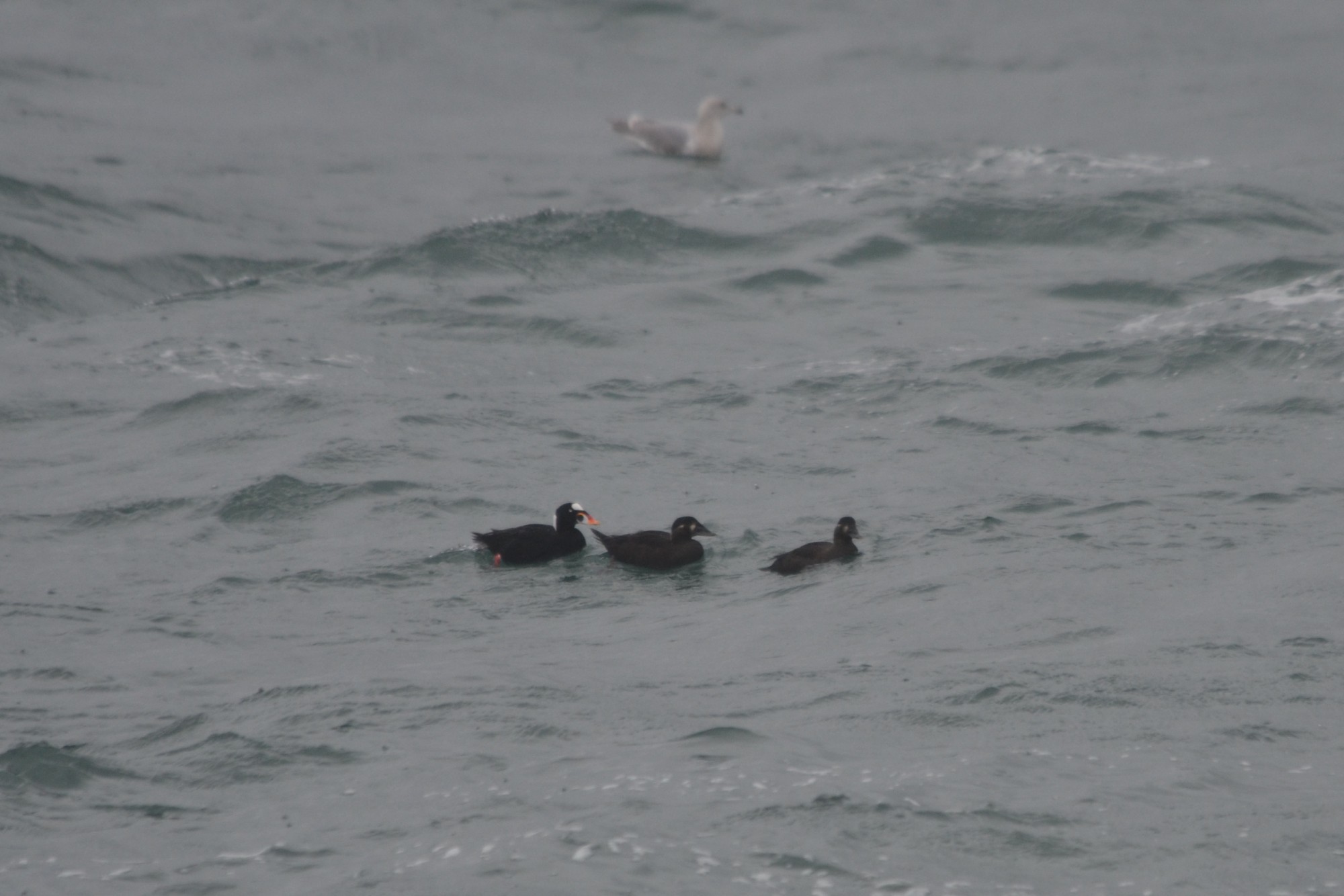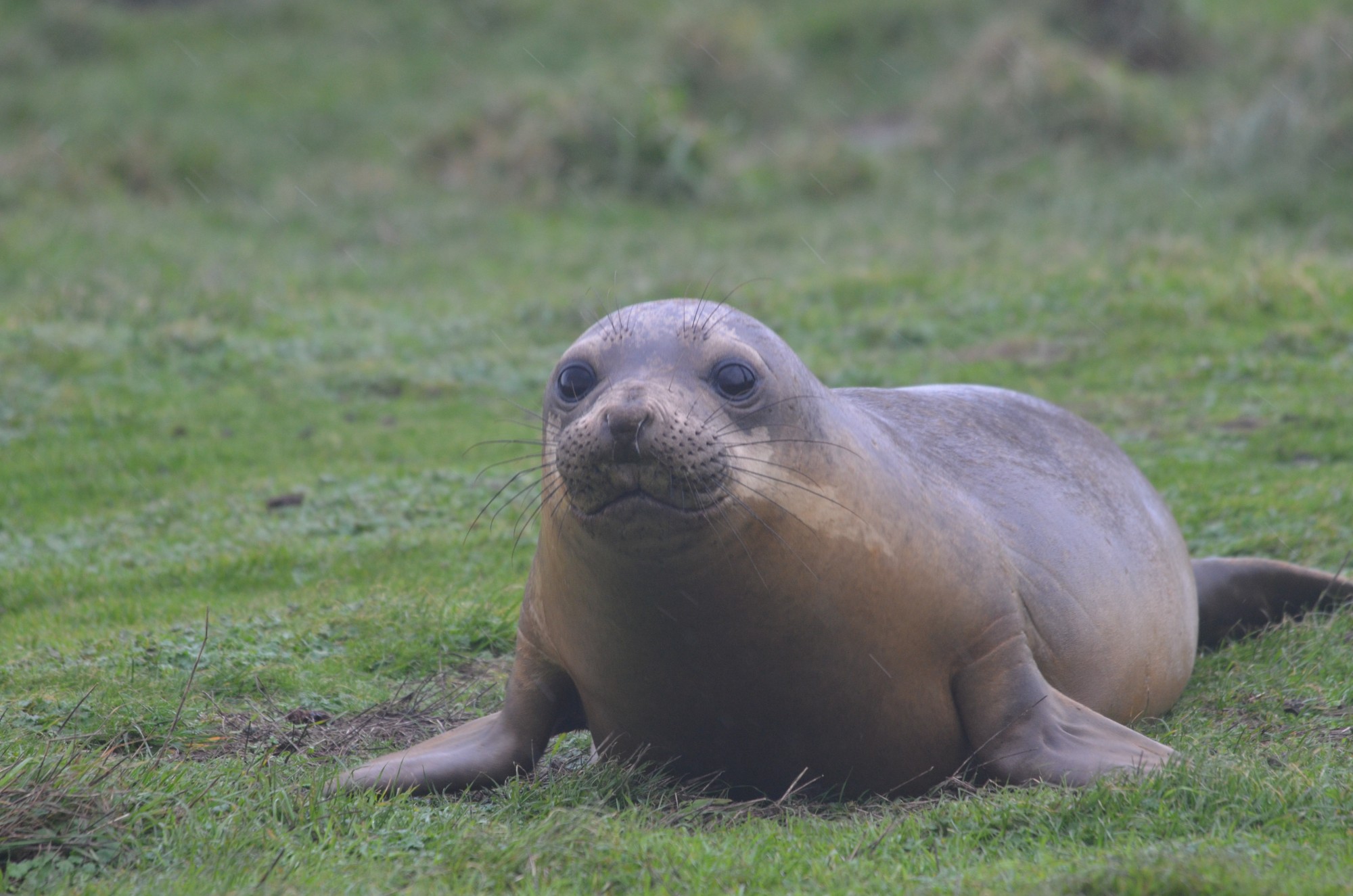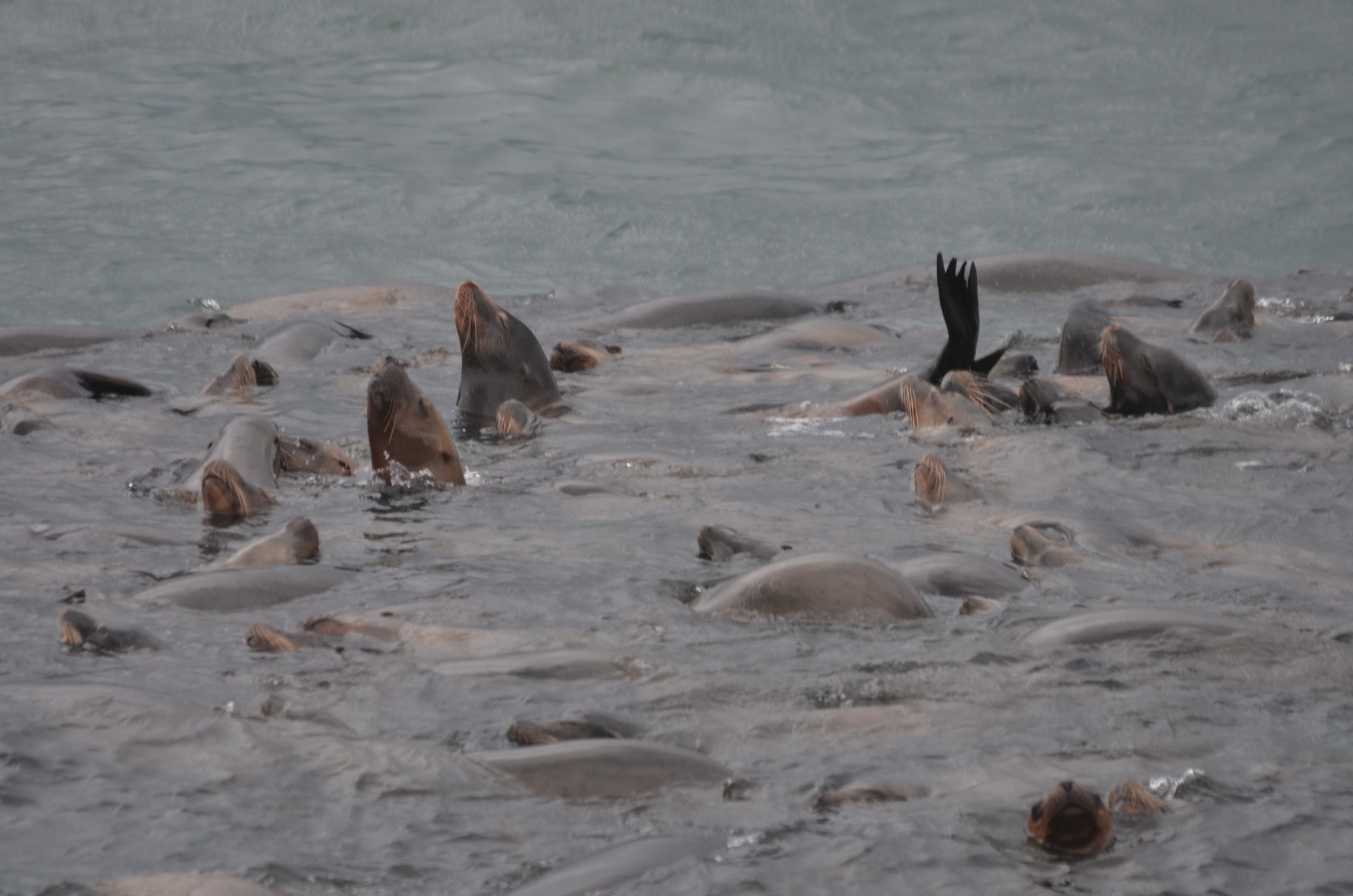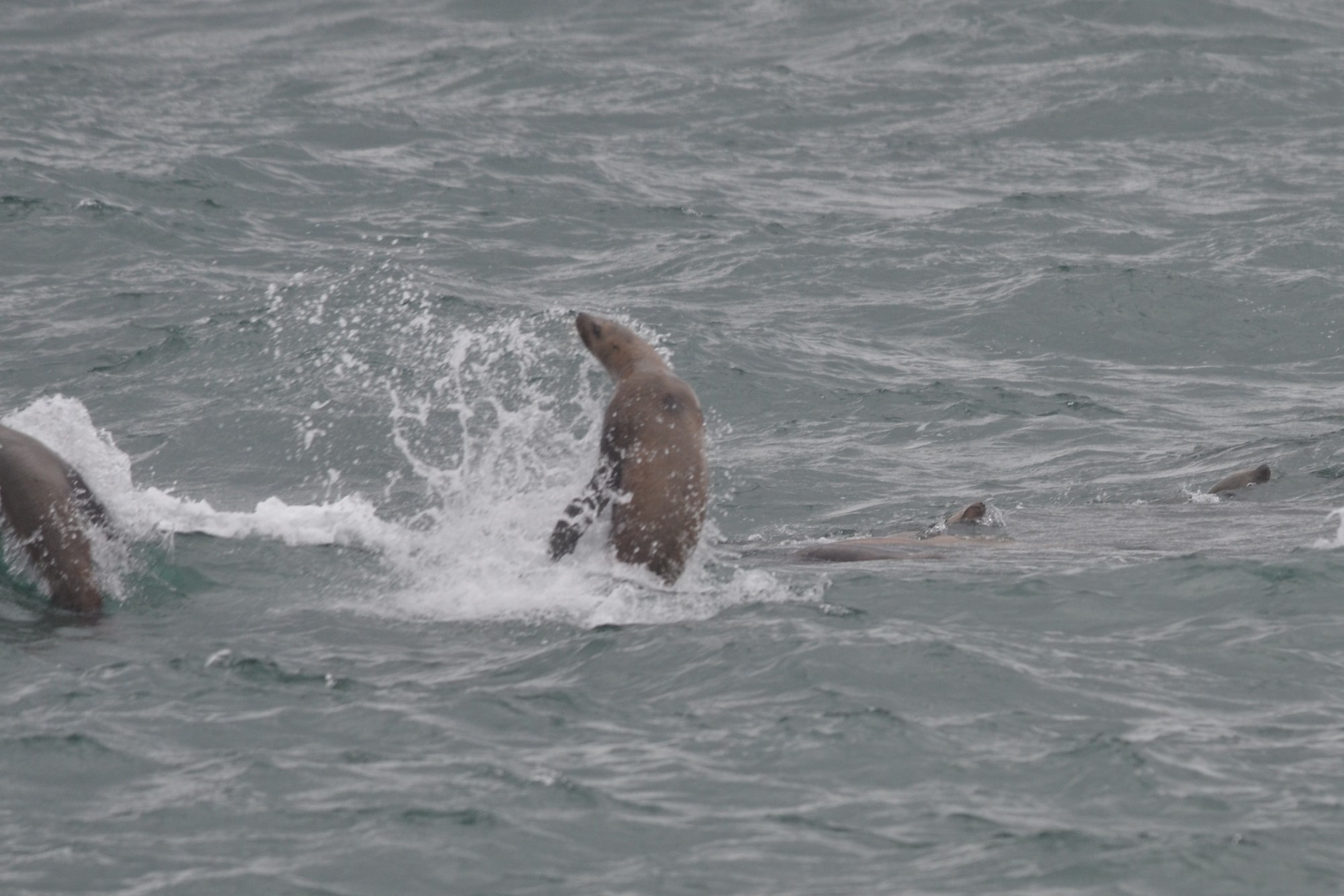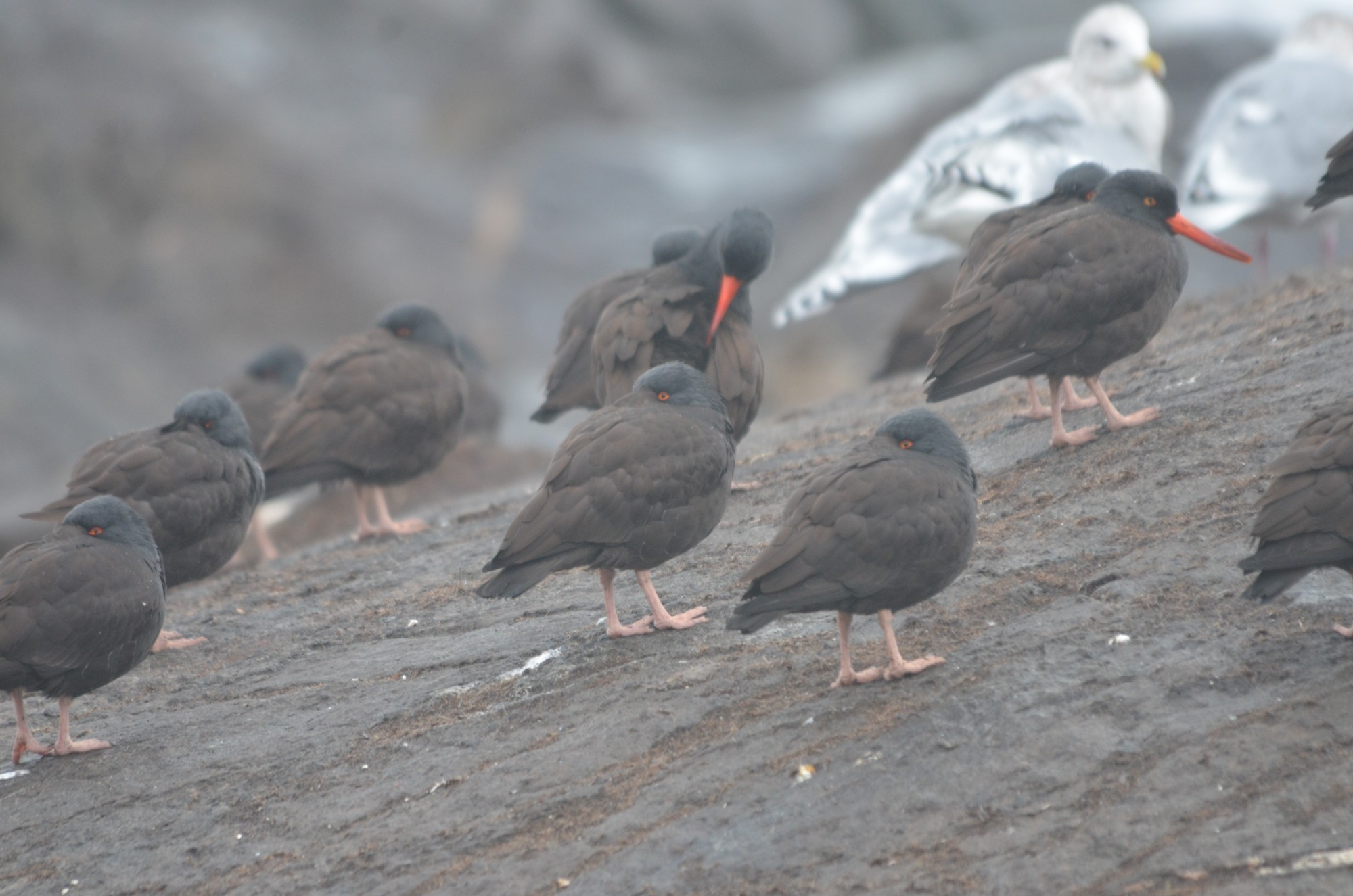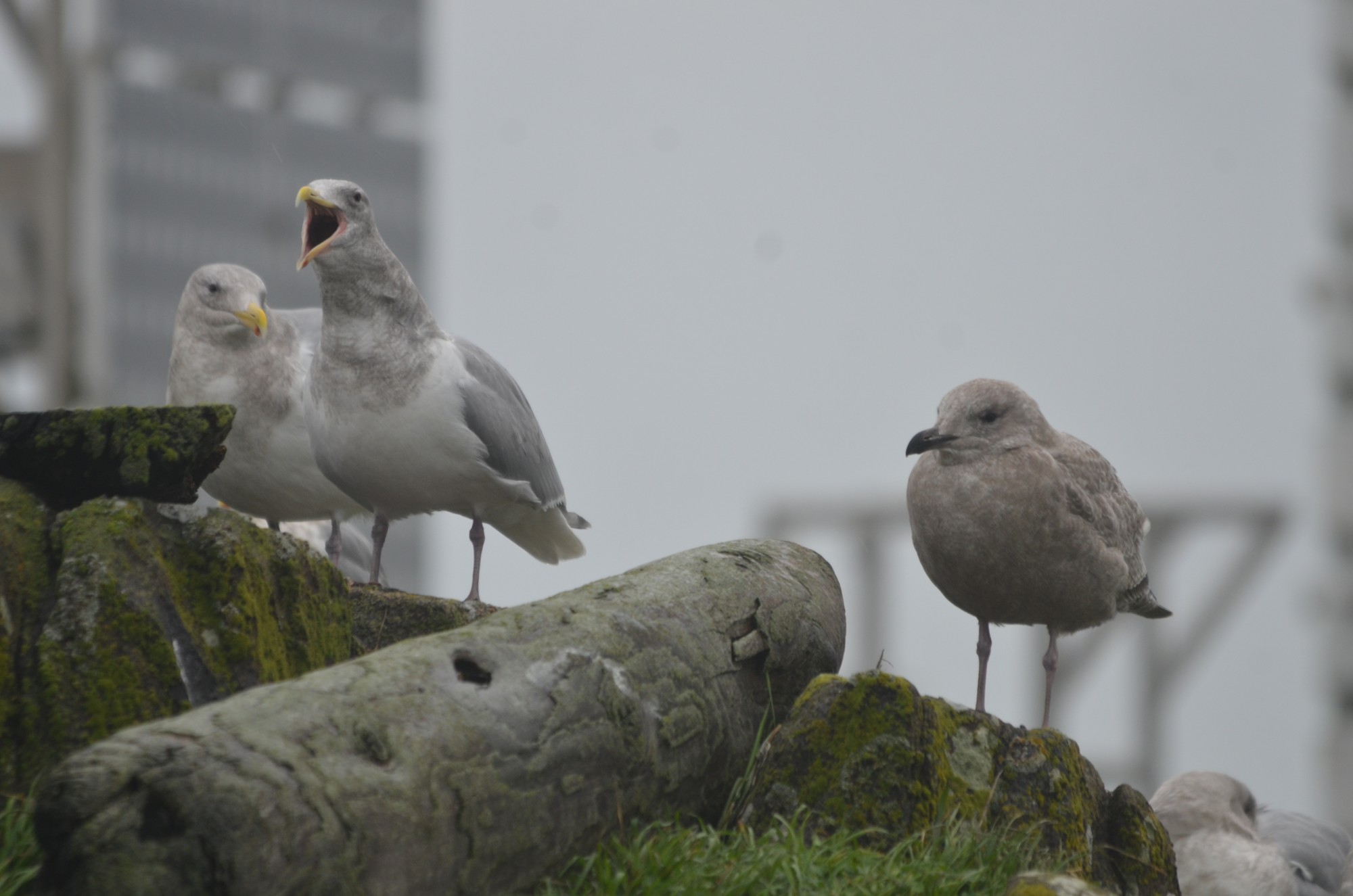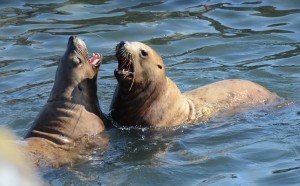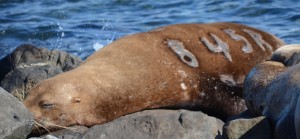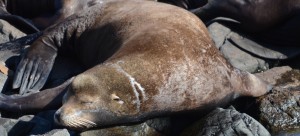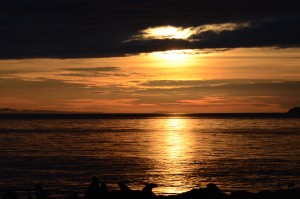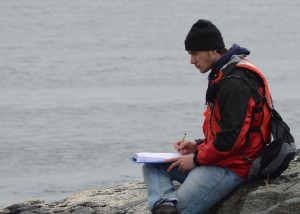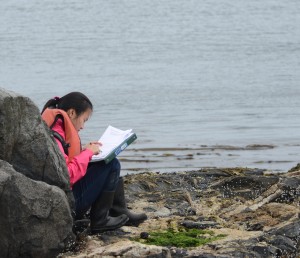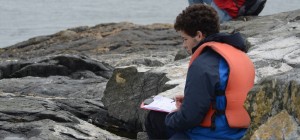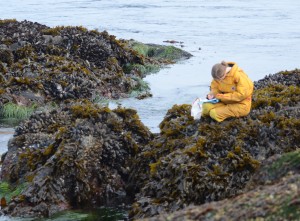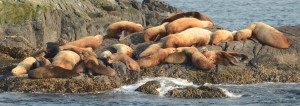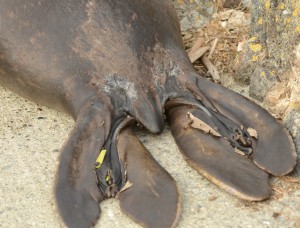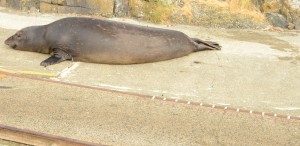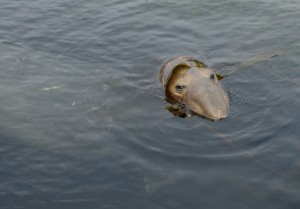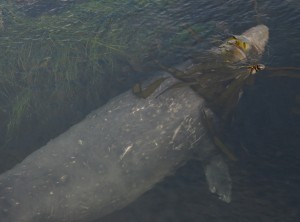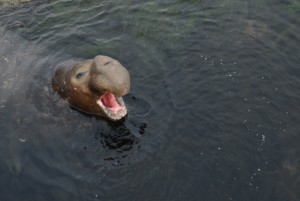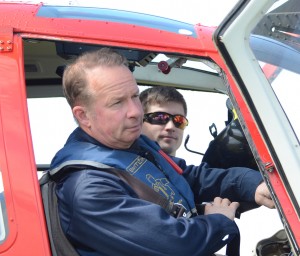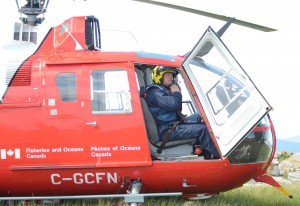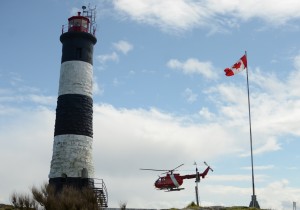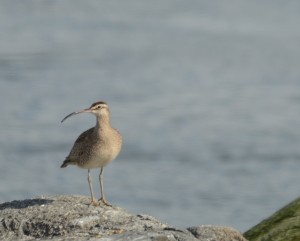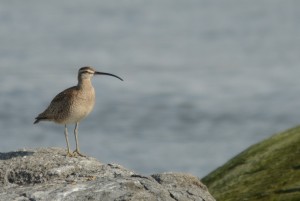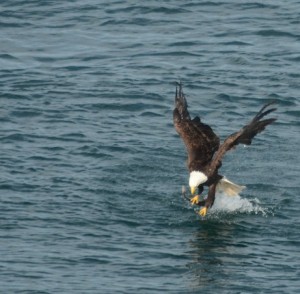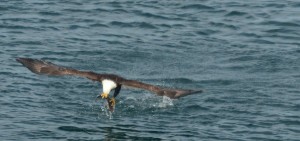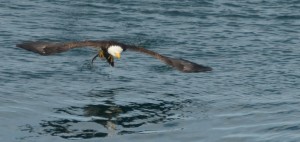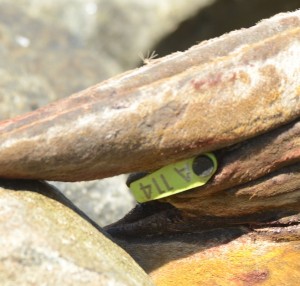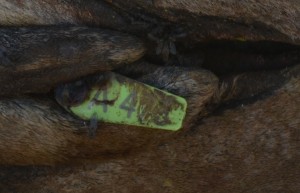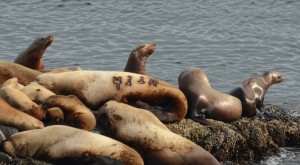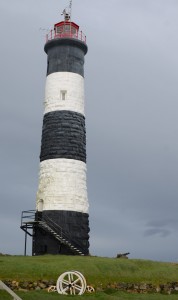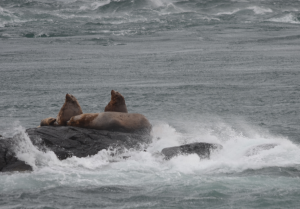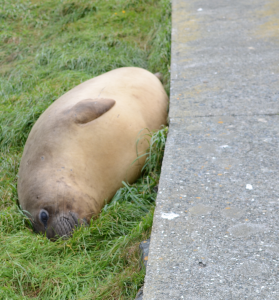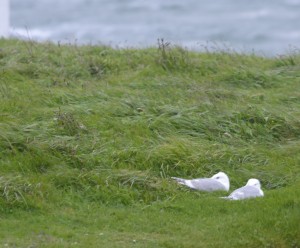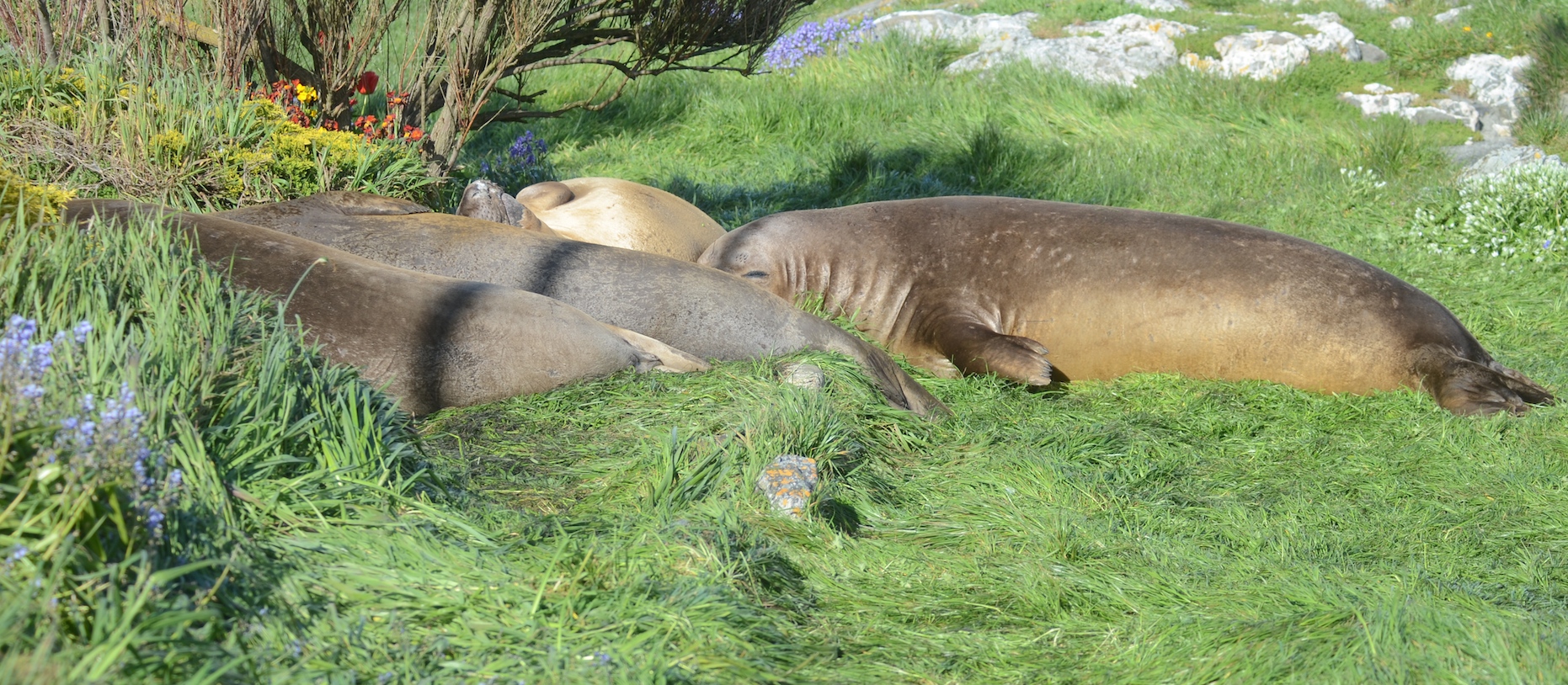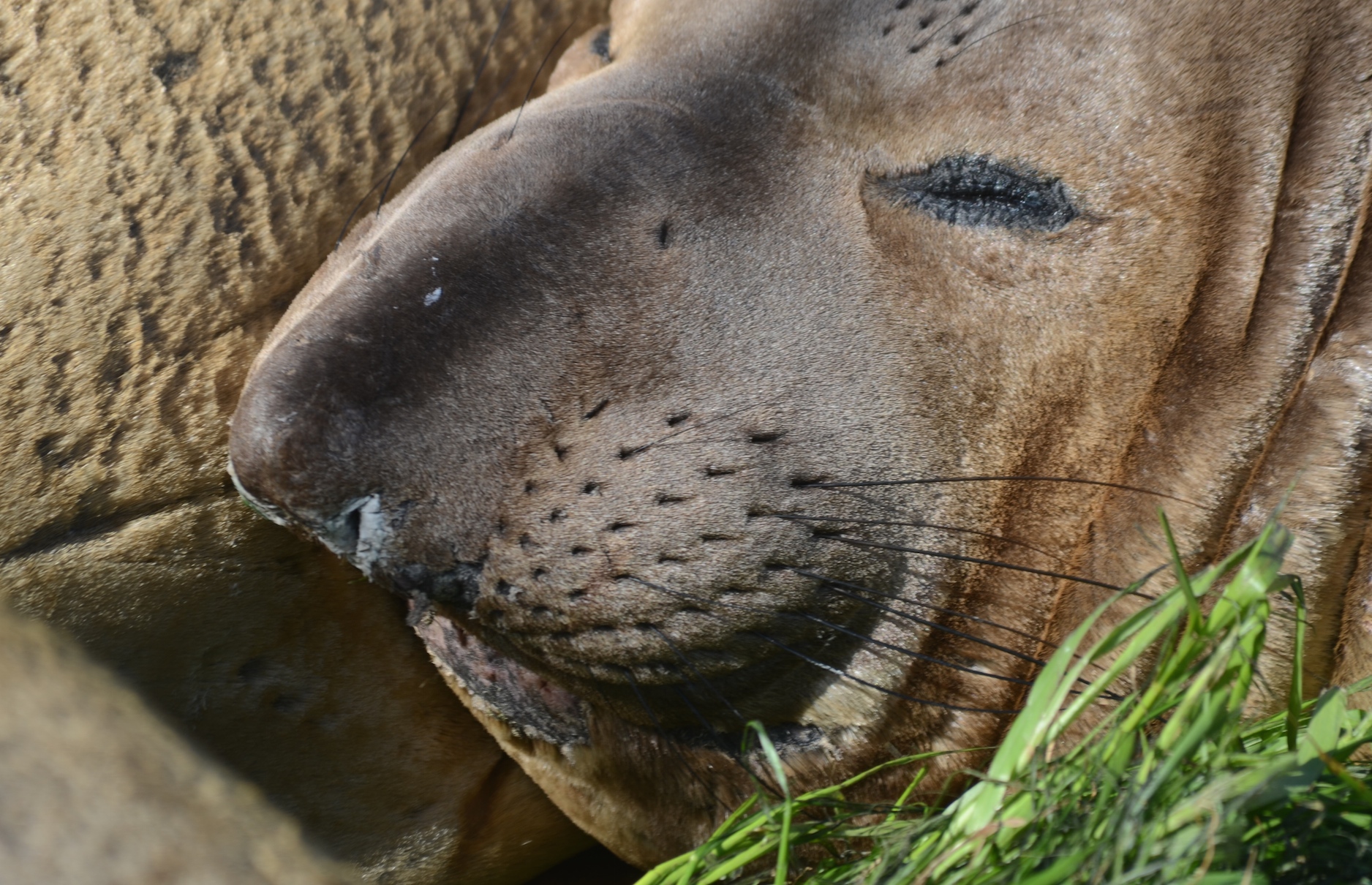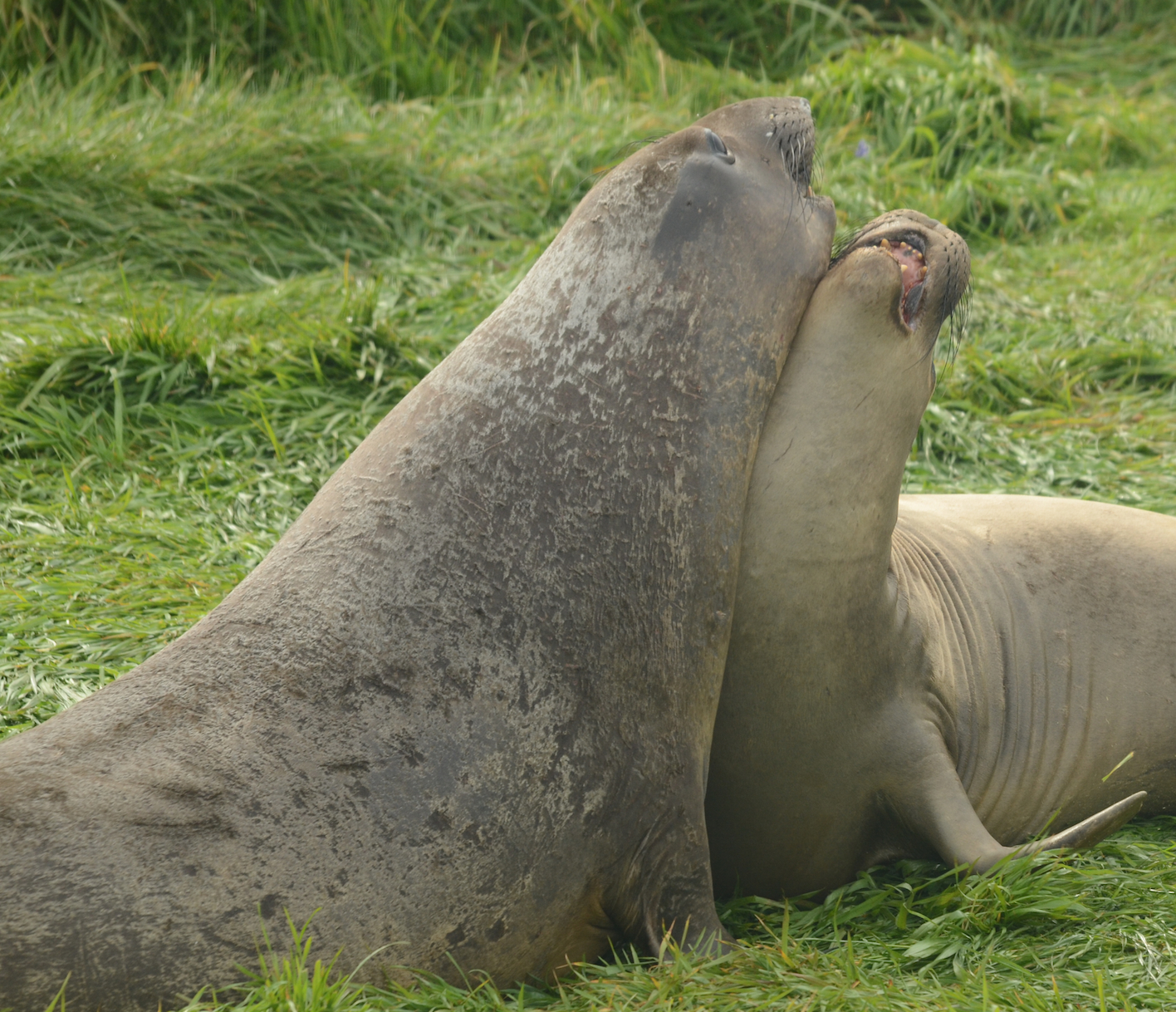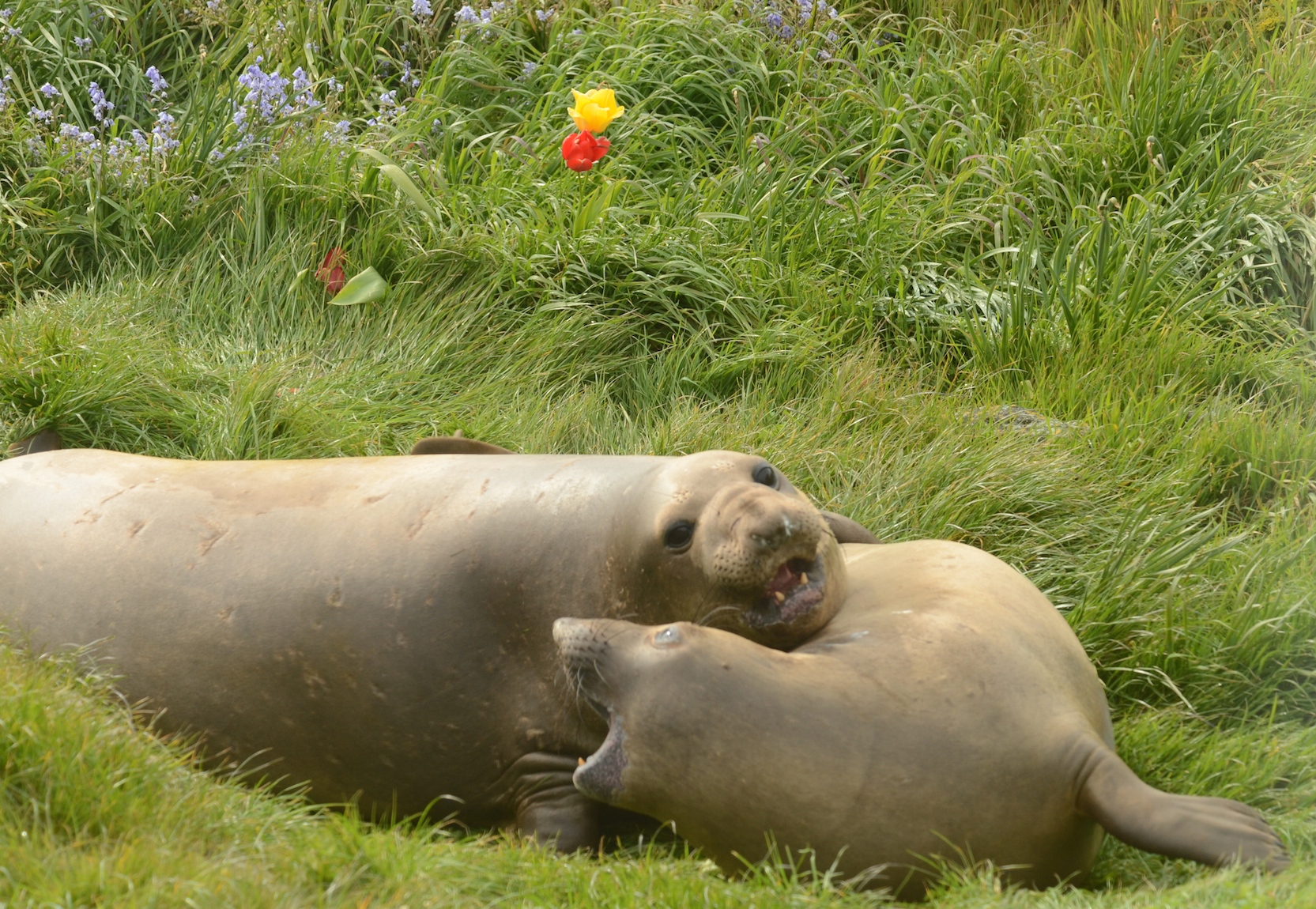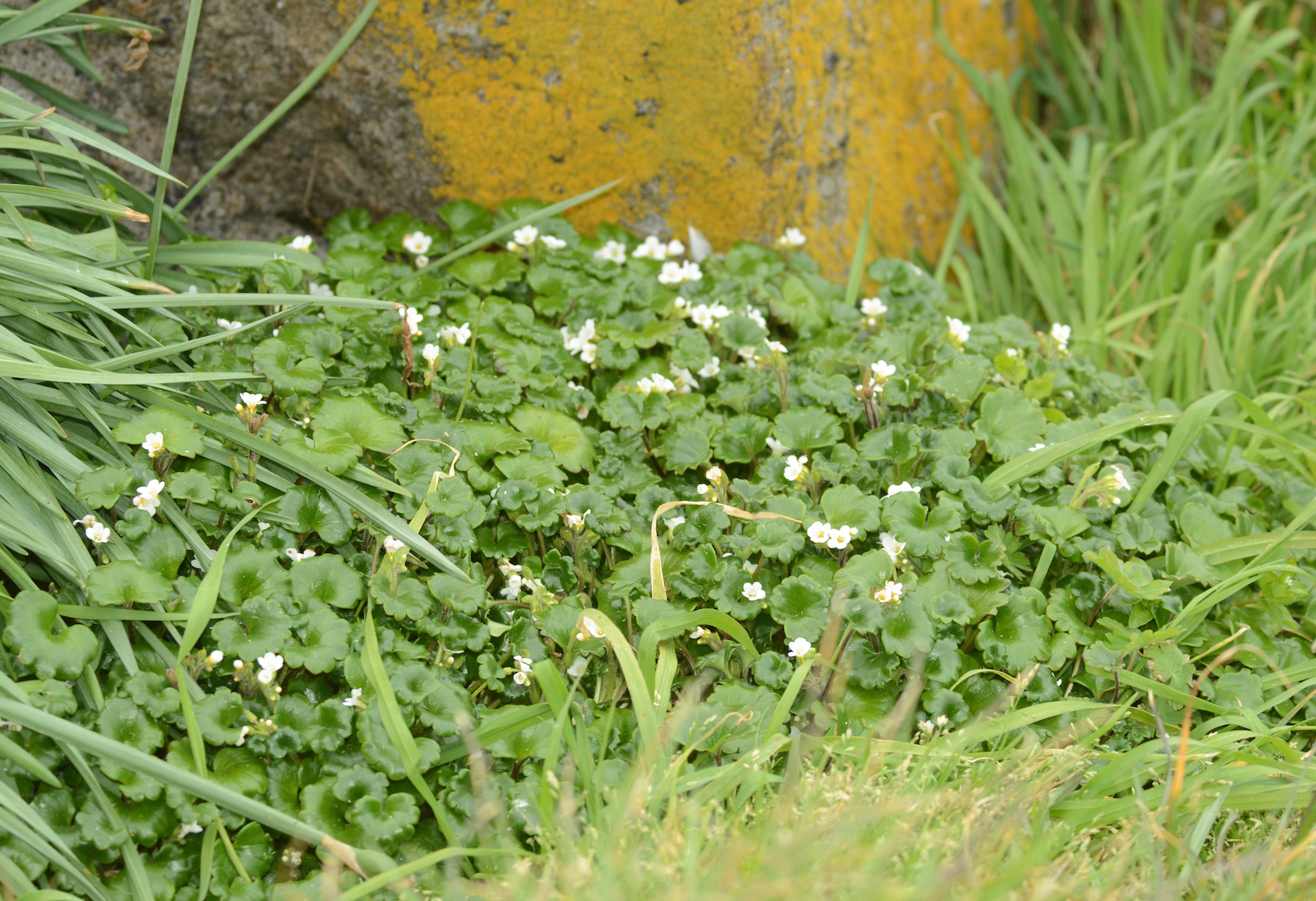It was a day defined by wind, starting in the wee hours of the morning, with 30 – 40 knot northeasterlies which calmed just after dawn, then switched to equally ferocious westerlies. The afternoon westerly subsided to 20 – 25 knots early then built back up to 25 – 30 knots as I post this log blog.
The barometer’s fall, started Monday, was short-lived: it started to rise again in early hours today and is leveling off as the day ends. The forecast calls for afternoon westerlies tomorrow and the gale warning remains in effect. They are calling for only a 60% chance of showers and precipitation is taking on new meaning here south of latitude 48o18’ N. What we consider normal rain and showers on the outer coast just doesn’t materialize in the same way here in the Mediterranean climate of Race Rocks. It is so much more of a desert than the outer west coast.
I only saw one whale watching boat today and they were travelling east, well south of the Ecological Reserve. Sports fishing boats were also notably absent. Very wise considering the sea state, wind and current conditions today.
The Northern Elephant Seal moult is taking a new dive into the unconscious with fewer hours awake and active. Some animals have not moved more than a few metres in 24 hours. The larger females seem to be leading the race to moult and the two biggest females and largest male are almost 75% moulted. The soft grey fuzz look is taking over from a once brown and tattered look.
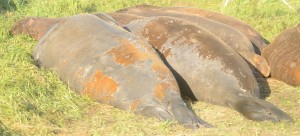
Two of the larger animals on the island are close to 75% moulted, a male (left) and female (right). Young males behind are not as far along.
The seals are also moulting their “whiskers” which are referred to by biologists as vibrissae. It is thought they vibrissae are helpful in detecting vertically migrating prey at depths of greater than 500 meters. Of course it is a bit hard to make observations in situ but recent anatomical work on how these whiskers are enervated revealed over 1500 nerve axons per vibrissae giving more weight to their importance as sensory organs.
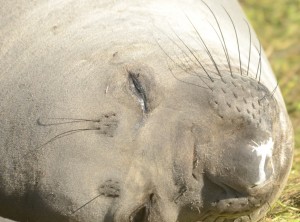
This female elephant seal has moutled her facial hair and skin, revealing a soft looking gray fuzz. Note that the “whiskers” and “eyebrows” are also moulting. These are important sensory hairs called vibrissae.
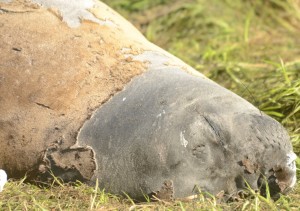
This young Northern Elephant Seal has moulted most of its skin and fur around the head area. You can also see that it has lost its eyebrow “hairs” also known as vibrissae.
More animals are arriving on Great Race Island and there are now fourteen ‘lawn ornaments’ and the lawn is well a truly crushed (Really beats mowing.)
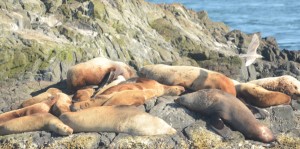
Stellers Sealions hauled out on South Islets. Note the young, branded animal # 460Y, one up from bottom left.
The Steller’s (or Northern) Sealions, and a few California Sealions continue to haul-out on South Islands and I spotted a brand today on the youngest Steller’s that I have yet to see here. #460Y was branded as a pup at St. George in northern California, in the summer of 2013, making it less than two years old at this stage. There are several other Steller’s Sealions that are the same size and appearance that may also be that young.
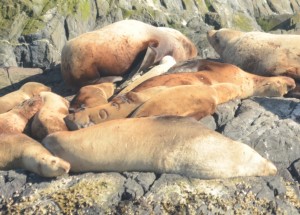
#460Y was branded in July 2013 . This young animal and probably several others its’ size are less than two years old and may still be nursing occasionally.
There were no visitors today and maintenance was routine.
